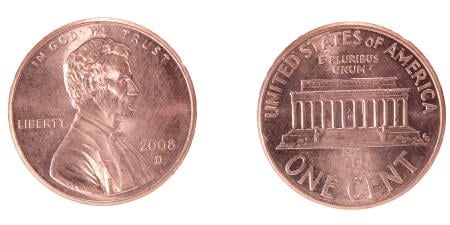Chronic Myeloid Leukemia (CML) is a rare disease (annual incidence in the United States of 2 in 100 000), but the understanding of its pathophysiology directly led to the development of one of the first truly specific anti-neoplastic therapies.1
CML is characterized by an over-proliferation of marrow cells generally manifested by an elevated white blood cell count with a left-shifted differential. The appearance of the blood smear resembles what would normally be seen on a bone marrow aspirate: myeloid forms in all stages of differentiation including blasts, promyelocytes, myelocytes, metamyelocytes, and bands. Other typical findings include basophilia (or eosinophilia), thrombocytosis, and splenomegaly. Most patients present asymptomatically, often at the time of a routine CBC during a check-up or as part of the work-up of an unrelated problem. Constitutional symptoms such as fatigue, fever, or night sweats reflect the high cell turnover. Left upper quadrant pain from the splenomegaly could be another presenting complaint.
The course of CML is subdivided into different clinical phases reflecting the underlying pathophysiology:
- The chronic phase—the presenting phase in over 85 percent of patients—is typified by the features listed above. With a median duration of 4 to 8 years, this phase is compatible with normal activities.
- Barring an allogeneic transplant, the terminal acute leukemia (myeloid in 75 percent, lymphoid in 20 percent) blast crisis phase supervenes.
- This is sometimes preceded by an "accelerated phase," characterized by increasing constitutional symptoms and spleen size as well as poorly controlled counts.
The goals of therapy have been, first, to prolong the duration of the chronic phase and, second, to eradicate the disease if possible.
The diagnosis of CML should be strongly considered in a patient with leukocytosis unexplained by a severe infection, especially if accompanied by basophilia and an elevated platelet count. Such a suspicion should prompt an effort to determine if the diagnostic abnormality—the Philadelphia chromosome with the resultant bcr-abl fusion mRNA and protein—is present in the hematopoietic cells obtained from peripheral blood or bone marrow sources. One of several methodologies can be employed to detect this hallmark finding. The most typical is metaphase cytogenetics. Cells are allowed to divide and enter metaphase, and the chromosomes are counted. A foreshortened chromosome 22 constitutes the Philadelphia chromosome and indicates the presence of the bcr-abl transgene due to a t(9;22) balanced translocation. Interphase cytogenetics (fluorescence in situ hybridization or FISH) can alternatively be used to detect this fusion when fluorescent probes for each of the involved genes can be shown to colocalize. Finally, the gold standard is now polymerase chain reaction (PCR)-based detection of the fusion bcr-abl mRNA. The PCR technique can detect from 1/10 000-1/1 000 000 fusion mRNA molecules. Philadelphia-negative CML, an entity clinically resembling CML yet having no detectable bcr-abl fusion, probably has a variant pathophysiology and should be considered a separate disease, particularly in the current therapeutic era.
The consequences of the bcr-abl fusion protein—a tyrosine kinase enzyme always in the "on" position—are unbridled signaling resulting in overproliferation of hematopoietic elements. This yields the high white blood cell counts, platelet counts, and the extramedullary hematopoeisis/splenomegaly typically seen at presentation. The disordered signaling also results in the turning on of downstream proteins, failure to undergo apoptosis (programmed cell death), and cytoskeletal changes.2 Experiments have shown that the bcr-abl protein is necessary and sufficient to produce CML.3 Inhibiting bcr-abl with imatinib caused specific anti-leukemic effects in cultured cell lines and resolution of murine bcr-abl–bearing leukemias, providing a high degree of pre-clinical rationale for use of this agent.4
Revolutionary Approach to CML
Imatinib has indeed revolutionized the approach to patients with CML. The historical milieu from which imatinib entered the therapeutic armamentarium basically involved an allogeneic transplant for those young and fit enough to undergo the dangerous procedure and who had a histocompatible donor, whether sibling or unrelated. In patients under age 45 transplanted within a year of diagnosis, the treatment-related mortality is 10-20 percent with long-term disease eradication in about 60 percent.5 Many of those who relapse can be saved with infusions of lymphocytes from the donor (adoptive immunotherapy).6
Other patients received "medical therapy" which evolved from the oral chemotherapeutic agents: first busulfan, then hydroxurea, and finally interferon.7 Interferon, a naturally occurring protein, was the first agent to cause a significant diminution of disease burden, and was, perhaps in combination with low-dose cytarabine,8 considered the treatment of choice for CML patients not undergoing allogeneic transplantation. Interferon's use was associated with frequent side effects, including neuropsychiatric and constitutional problems which led to intolerance in up to 25 percent of patients.9
Imatinib mesylate's activity was initially reported in a series of phase I trials10,11 conducted in patients in all phases of CML, and was confirmed in large phase II trials12,13,14 in patients with interferon-refractory or intolerant chronic phase as well as in more advanced disease. The following conclusions could be drawn from these clinical studies:
- Although imatinib has activity in all phases of CML, it leads to a higher response rate in earlier phases;
- The drug is generally well-tolerated with mild side effects of diarrhea, gastrointestinal distress, and fluid retention being common but rarely severe or life-threatening;
- Cytogenetic responses are common in which few if any Ph-positive metaphases are detectable.
Imatinib was approved by the FDA in May 2001 for the treatment of all phases of CML. (Editor's note: imatinib mesylate is commercially marketed as Gleevec.) However, the results of the IRIS study,15 in which patients with recently diagnosed chronicphase CML were randomized to receive either ara-C plus interferon or imatinib have clearly established imatinib as the medical treatment of choice.
Table 1. Results of the IRIS study |
||
| Imatinib |
Control arm |
|
|
Complete cytogenetic response rate |
74% |
9% |
| Likelihood of progression to advanced disease | 2% | 9% |
| Intolerance rate | 1% | 19% |
The precise role of allogeneic transplant in the imatinib era remains controversial.16 For patients over age 30-40, it seems reasonable to start imatinib and reserve transplant for signs of failure of this medical therapy as evidenced by persistence or re-emergence of a sizeable CML disease burden detected by cytogenetics or a rise in the number of bcr-abl transcripts assayed by quantitative PCR. For patients who are younger with a sibling match, a transplant could be reasonably offered as initial therapy or after a few months on imatinib to lower disease burden. While the emergence of imatinib resistance has been described, and is frequently due to a mutation in the bcr-abl ATP (eg, drug) binding site, a new generation of small molecule inhibitors which can inhibit these 'resistant' enzymes are emerging.
References
- Sawyers CL. Chronic myeloid leukemia. N Engl J Med. 1999;340(17):1330-1340.
- Faderl S, Talpaz M, Estrov Z, et al. The biology of chronic myeloid leukemia. N Engl J Med. 1999;341(3):164-172.
- Daley GQ, Van Etten RA, Baltimore D. Induction of chronic myelogenous leukemia in mice by the P210bcr/abl gene of the Philadelphia chromosome. Science. 1990;247(4944):824-830.
- Druker BJ, Tamura S, Buchdunger E, et al. Effects of a selective inhibitor of the Abl tyrosine kinase on growth of Bcr-Abl positive cells. Nat Med. 1996;2(5):561-566.
- Clift RA, Buckner CD, Thomas ED, et al. Marrow transplantation for chronic myeloid leukemia: a randomized study comparing cyclophosphamide and total body irradiation with busulfan and cyclophosphamide. Blood. 1994;84(6):2036-2043.
-
Kolb HJ, Schattenberg A, Goldman JM, et al, for the European Group for Blood and Marrow Transplantation Working Party Chronic Leukemia. Graft-versus-leukemia effect of donor lymphocyte transfusions in marrow grafted patients. Blood. 1995;86:2041-2050.
- Silver RT, Woolf SH, Hehlmann R, et al. An evidence-based analysis of the effect of busulfan, hydroxyurea, interferon, and allogeneic bone marrow transplantation in treating the chronic phase of chronic myeloid leukemia: developed for the American Society of Hematology. Blood. 1999;94(5):1517-1536.
-
Guilhot F, Chastang C, Michallet M, et al, for the French Chronic Myeloid Leukemia Study Group. Interferon alfa-2b combined with cytarabine versus interferon alone in chronic myelogenous leukemia. N Engl J Med. 1997;337:223-229.
- Hensley ML, Peterson B, Silver RT, et al. Risk factors for severe neuropsychiatric toxicity in patients receiving interferon alfa-2b and low-dose cytarabine for chronic myelogenous leukemia: analysis of cancer and leukemia Group B 9013. J Clin Oncol. 2000;18(6):1301-1308.
- Druker BJ, Talpaz M, Resta DJ, et al. Efficacy and safety of a specific inhibitor of the BCR-ABL tyrosine kinase in chronic myeloid leukemia. N Engl J Med. 2001;344(14):1031-1037.
- Druker BJ, Sawyers CL, Kantarjian H, et al. Activity of a specific inhibitor of the BCR-ABL tyrosine kinase in the blast crisis of chronic myeloid leukemia and acute lymphoblastic leukemia with the Philadelphia chromosome. N Engl J Med. 2001;344(14):1038-1042.
-
Kantarjian HM, Sawyers C, Hochhaus A, et al. Hematologic and cytogenetic responses to imatinib mesylate in chronic myeloid leukemia. N Engl J Med. 2002;346:645-652.
- Talpaz M, Silver RT, Druker BJ, et al. Imatinib induces durable hematologic and cytogenetic responses in patients with accelerated phase chronic myeloid leukemia: results of a phase 2 study. Blood. 2002;99(6):1928-1937.
- Sawyers CL, Hochhaus A, Feldman E, et al. Imatinib induces hematologic and cytogenetic responses in patients with chronic myelogenous leukemia in myeloid blast crisis: results of a phase II study. Blood. 2002;99(10):3530-3539.
- O'Brien SG, Guilhot F, Larson RA, et al. Imatinib compared with interferon and low-dose cytarabine for newly diagnosed chronic-phase chronic myeloid leukemia. N Engl J Med. 2003;348(11):994-1004.
- Peggs K, Mackinnon S. Imatinib mesylate—the new gold standard for treatment of chronic myeloid leukemia. N Engl J Med. 2003;348(11):1048-1050.



